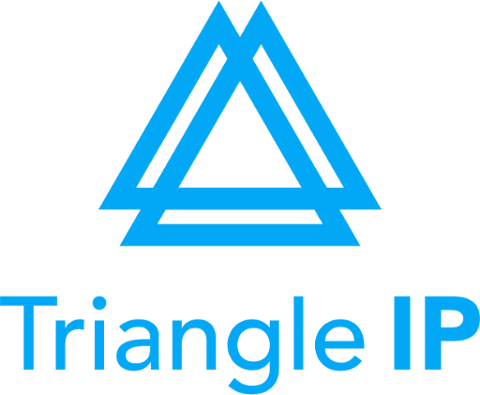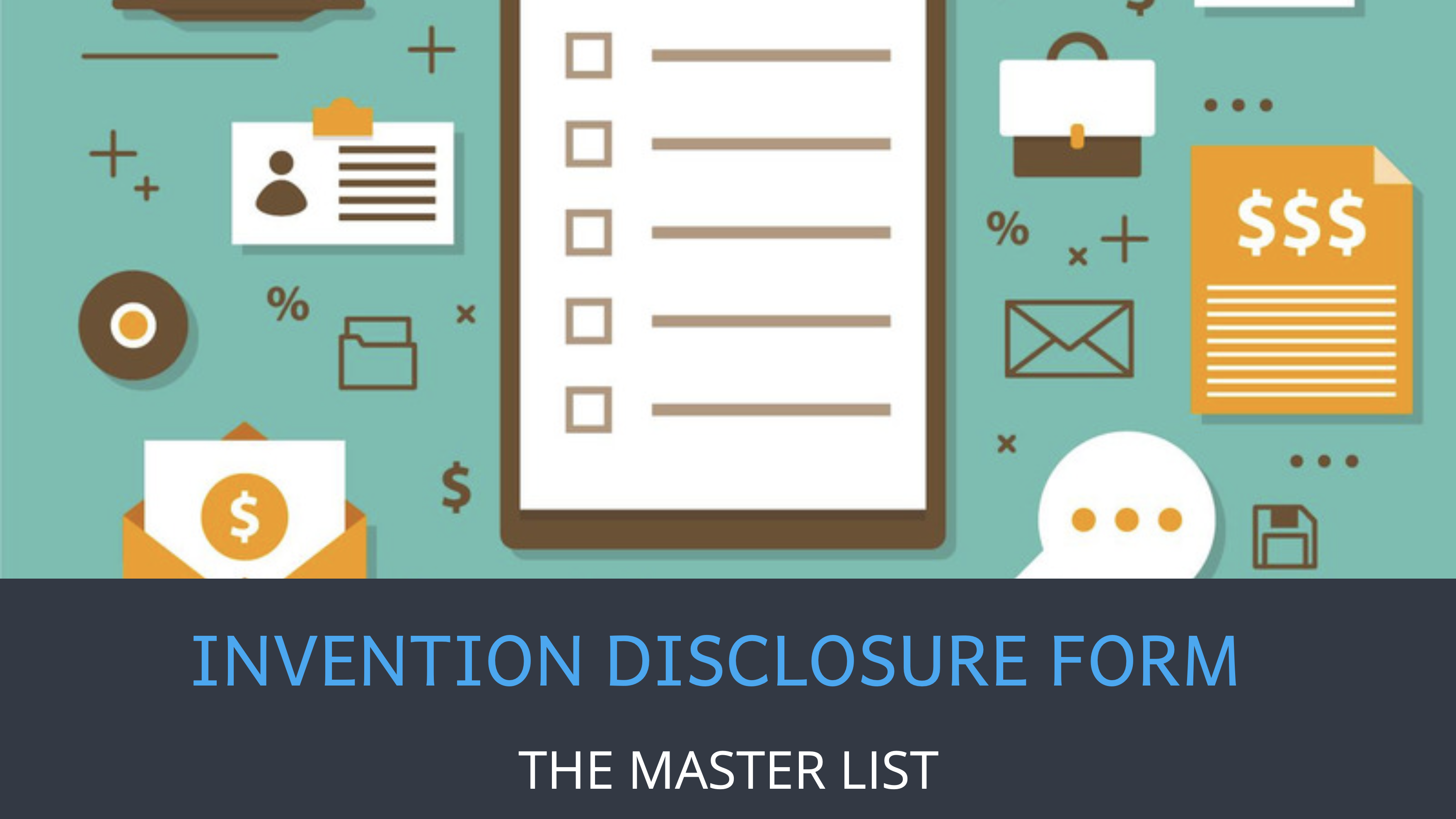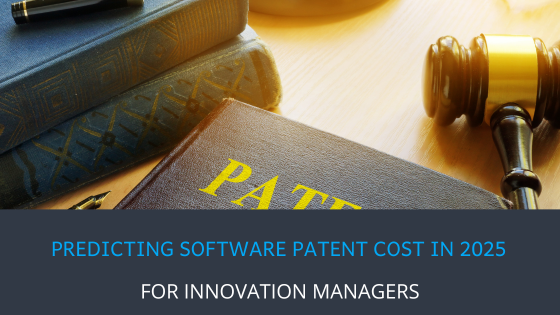“Fields in an invention disclosure form must be chosen to maximize the engagement from inventors.”
What is an Invention Disclosure Form (IDF)?
An invention disclosure form (IDF) records important technical information and facts relating to an invention. In this context, comprehending the intricacies of invention disclosure forms becomes crucial for both inventors and innovation managers. IDF acts as a business record for your company to decide whether to invest in patent protection. It also provides critical information to patent practitioners for preparing patent applications around inventions. It also provides information that can implicate patent issues such as publication and sales activity.
For an inventor, filling out an IDF can be a daunting process. As an innovation manager you need to make sure that the IDF template is:
- Inventor friendly
- Suits your organizational needs
Balancing these requirements is easier with advanced innovation management tools that cater to diverse organizational structures.
If there are multiple inventors, any one of them can be designated to fill out the IDF. However, all of the inventors should review the IDF for accuracy and to be sure it has plenty of details on the innovation.
Fields in an Invention Disclosure form – What to include?
There are many variations of IDFs. Some are short while others are lengthy with many more questions. This diversity reflects the broad spectrum of innovation types that organizations engage in, necessitating different information for each form. The reason why different IDFs request different information lies in the preferences of different organizations. Presented below is a master list of fields commonly included in IDFs and the reasons behind them. In designing your IDF, choose the fields that best suit your preferences after reviewing this article.
Tip: The various fields in an invention disclosure form must be carefully chosen based on their purpose.
Common Fields in an Invention Disclosure Form and Their Purpose
For easier understanding I have categorised the fields in an invention disclosure form into following:
- Invention Details
- Disclosure/Publication of the Invention
- Product/Commercialization
- Market Information
- Collaborators
- Miscellaneous
Also checkout: Filled Invention Disclosure Form Sample!
Invention Details
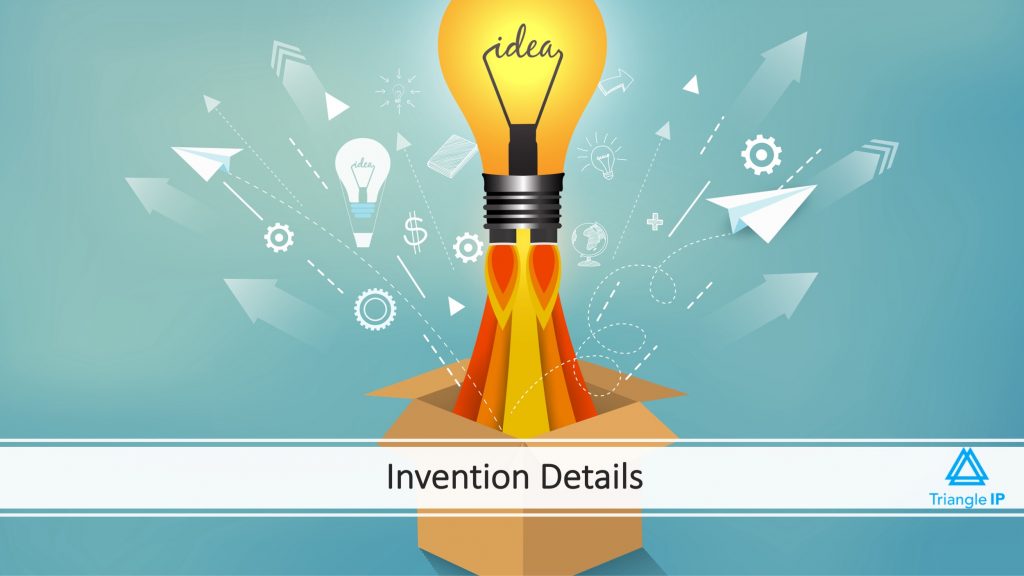
Title
The IDF needs a title to differentiate it from other submitted IDFs. The title should be descriptive enough to identify the nature of the invention. Identifying the right idea management tool can significantly aid in crafting effective titles and descriptions for IDFs. Also, aim for conciseness. For example, “Method and Apparatus for Signal Interference Processing.” Or, “Prokaryotic-Eukaryotic Hybrid Viral Vector.”
Field or Area of the Invention
Patent law is specialized by technology area. Therefore, this field can be used to sort IDFs by field, which could include the product name, business area and/or technology area.
Patents typically start with a statement describing the field of art to which the invention pertains. The patent attorney will ultimately determine the best way to describe the field or area of the invention. However, input from the inventor can be useful.
List of Inventors
Nearly all IDFs request a list of inventors. However, it is important to note that inventorship is a legal determination. Accordingly, some IDFs will instead request a list of “contributors” or the like instead of “inventors.” The goal is to list people who have actively participated in developing the invention. If the organization decides to file a patent application, the actual inventorship will be legally determined by the patent prosecutor.
The consequences for failing to get the list of inventors correct are dire. A patent can be invalidated for either including someone as an inventor who did not legally qualify or failing to list someone who did.

State of the Art
When a patent application is examined, the claimed invention is assessed in terms of whether it is novel and non-obvious. Prior art is any published information relevant to assessing your patent before the filing date of the patent application. Examples of the prior art include research publications, patents, marketing materials, and presentations at scientific conferences.
It is assumed that inventors are familiar with other work going on in their field in relation to their invention. Therefore, IDFs will often request any prior art that the inventors are aware of. Inventors should identify anything that could potentially be relevant to the novelty and/or obviousness of the invention.
There is no duty for the inventor to conduct a literature search. However, if an inventor has done so and is aware of relevant prior art then it must be disclosed to the USPTO.
Detailed Description of the Invention
This section might also ask for a summary, the problem solved by the invention, and/or the advantages of the invention. Often this is the longest part of the IDF with the most technical detail.
This section should take the most time. Important elements include stating the challenge or problem to be solved, describing the invention’s physical / technical features, describing how the invention is made, and explaining how it works. Accentuate how the invention is different from the prior art.
Any alternative approaches in the prior art that solve the same problem can also be discussed, along with explanations for why they do or don’t work. Other elements to include are ways the invention is more advanced and technologically sound when compared to the alternatives.
Any terms that readers may be unfamiliar with should be defined. Include any test data and relevant findings that demonstrate the effectiveness of your invention. Any graphs and drawings that have been created should be included. Significant findings should be called out and their importance explained.
Alternate Embodiments
In a patent application, it is advantageous to describe any alternative embodiments, even if they are not currently of commercial interest. It is not uncommon to focus on the preferred solution while discounting others. Including such alternative embodiments can prevent others from securing a patent on similar, yet distinct, variations of the invention that you already thought of. The description of alternative embodiments will become prior art against the patent applications of competitors. This can block those competing alternatives to the invention from entering the marketplace.
Furthermore, the inventor may consider certain embodiments to be less desirable now, but this could change in the future. By including alternative embodiments in the specification, the option of claiming these embodiments later is preserved.
Tags/Keywords for the Invention
Tags or keywords are sometimes used by organizations to filter and find invention disclosures within their databases. Underlying technologies, product lines, product names, or any other descriptors that are common in your enterprise. For example, innovation managers may wish to find all invention disclosures related to the tag “blockchain” and adding that will save grief when later searching and sorting the portfolio.
Also Read – 7 Surefire Ways to Get More Invention Disclosures!
Disclosure/Publication of the Invention
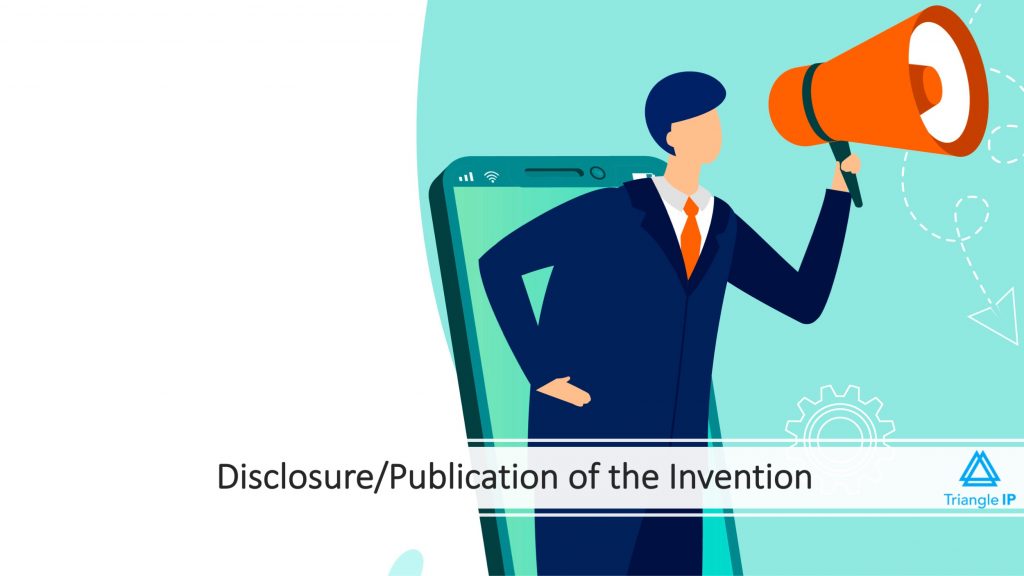
Variations of this field include:
- Have you described or shown your invention to anyone (within the organization, other than the inventors)?
- Has a verbal or written description been given to a person outside of the company?
- If yes, to whom?
- If yes, was the person under any requirement to keep the information confidential or secret (e.g. NDA)?
- Have you described or do you propose to describe the invention in a technical paper or other printed publication, in marketing material, or in any other form of media, including the Internet?
Public disclosure of the invention has serious implications for some jurisdictions. Examples of public disclosures are the publication of a research paper or the presentation at a scientific conference. In most countries around the world, any public disclosure before a patent application is filed is fatal to the patentability of the invention. Some countries provide grace periods in which applications can be filed up to 6 months or a year after such disclosures. Accordingly, it is critically important to know the dates of any public disclosures in order to determine what patent rights are still available.
Where a public disclosure has occurred, the inventors should provide copies of any materials relevant to the disclosure. These can include manuscripts, handouts, posters, electronic presentations, and slides. In some cases, what seems like a public disclosure does not actually qualify as one in light of the claiming strategy in the patent application. This is because the invention in the publication was not described in a way that would enable someone who works in the field to make or use the invention. Providing these materials allows the patent attorney to make a determination regarding their impact.
Providing an anticipated disclosure date also provides a timeframe for determining whether to pursue patent protection and for preparing and filing a patent application.
Product/Commercialization

Variations of this field include:
- Have any attempts been made to commercialize or sell the invention (e.g., have you approached any outsiders about purchasing or manufacturing the invention) or otherwise offered it for sale?
- Have you used the invention already publicly, manufactured or designed it into a product or do you plan to use the invention in commerce?
Any offer to sell the invention before a patent application has been filed has enormous implications. In many countries, the sale of an invention prior to filing a patent application precludes the ability to obtain a patent. However, some countries offer a grace period. For example, the US allows an inventor up to a year, after the commercial activity has started, to file a patent application around an invention.
Note that an offer for sale is sufficient to constitute commercial activity – no actual sale needs to have occurred.
Market Information

Variations of this field include:
- Market information for innovation to either sell or increase sales of an existing product
- Additional margin or profit for offering a product or service with the invention exclusively protected by patents
- Contacts to confidentially learn about market potential
- Please indicate any foreign markets in which you would suggest that a patent application should be filed and why
- Who are the major competitors and what products do they offer
- Provide names of possible licensees, if any monetization is contemplated
It is assumed that inventors are familiar with other work going on in their field in relation to their invention. IDFs may therefore often request information about domestic and international markets for the invention. IDFs may also request information about potential licensees. This information also helps identify potential competitors and prior art.
Collaborators

Variations of this field include:
- Manager email / phone number
- Prosecutor email / phone number
- Law firm / attorney
It is critical that the IDF include complete contact information for each individual listed. Decision-makers and patent attorneys need to be able to get in touch with relevant individuals to ask questions and/or clarify issues.
Additional Details/To Be Filled By Managers
Variations of this field include:
- Value or ranking
- Tracking or docket number
- Patentability score (i.e., likelihood of a patent issuing)
- Filing Deadline with any explanation of what is triggering that deadline
Like many forms, some fields are not for those filling out the forms. Some IDFs undergo internal review. As part of that process, IDFs may get assigned a value based on factors such as the invention’s usefulness, commercial potential, and/or how it aligns with the organization’s business and policies. Tracking / docket numbers may also be assigned. IDFs may also be assigned to a specific outside law firm to assist with the patenting process. Notations regarding such designations are sometimes marked in IDF fields for internal use only. The filing deadline is often driven by a public disclosure or offer for sale and when that would push the innovation into the public domain.
Assignment to Confirm Ownership by Enterprise
Some IDFs may also include assignment provisions, which largely confirm your ownership that your enterprise already secured. An assignment is the transfer of legal title to an invention and may be required by the patent office. Co-owners of a patent can separately practice an invention or license it without the other co-owner’s permission so control should be in a single entity. Obtaining a clear assignment of an invention is extremely important. Typically, inventors are asked to execute assignments at the time the patent application is filed again with a version suitable for recording at the patent office.
Miscellaneous
Future Research to Further Commercialization
Plans for the future development of the invention should be described in the IDF. This information can be valuable for determining whether to proceed with a patent application. It also allows the patent attorney to ensure that the patent application describes variations that include inventors’ future plans.
Sources of Funding and Biological Material Deposits
It is very important to know whether the invention has been funded by an entity other than the inventors’ employer. Such sponsorship may have implications for ownership/licensing rights and reporting obligations. This applies whether external funding of the invention was in whole or in part.
For some inventions, a sample of biological material must be deposited with a public repository to satisfy statutory requirements for patentability. For example, has any biological material relating to the invention been deposited in a public repository such as the ATCC, EMBL, or Jackson Lab?
Third-Party Code in Software
If a software invention incorporates third-party code, it raises ownership and licensing issues that must be addressed. Open source software used in the code base can also have implications.
University / Lab Resources (With Details) Used in Invention
Sometimes the ownership of an invention depends on whether the invention was made using an organization’s funds, resources, or facilities. Many government labs and universities require submitting all innovations to their technology transfer department to decide if the innovation is of interest to them and within the scope of your employment.
On a side note: Would you want to know how your patent application is progressing at the USPTO compared to other applications in the same domain?
The TIP tool offers statistics of the law firm and the examiner handling your case. Once the application is filed at the USPTO, and an examiner is allotted to your case, the tool indicates the relative performance of the law firm handling your case. The statistics revolve around the number of arguments, grant rate, and grant time. The tool also indicates the case health, for instance, it can tell you if a case needs your attention. There is a whole bunch of insights that you can gather from the TIP tool for strategic patent prosecution.
Request insights for any of your cases at the patent office using the form below.
Also read about the top 5 invention disclosure software options to choose the best for your enterprise.
Conclusion
An IDF is a business record that helps organizations decide whether to invest in an idea’s patent protection. It also helps patent practitioners prepare patent applications. Filling out an IDF can seem intimidating to inventors if it’s long and complex. To make sure inventors engage with your invention disclosure process you must choose a suitable IDF template or put the suitable fields in an invention disclosure form.
At Triangle IP, we have designed a simple and engaging invention disclosure form. Here is how it looks:
The best part is this electronic invention disclosure form shall soon be readable back in the tool. And, the online invention disclosure form already exists within Triangle IP innovation management software.
Quick Update: The inventors can upload this offline form back into the TIP Tool to have all their ideas in one place.
Note: The preceding is general business advice and not to be construed as legal advice. IP laws vary by country and retaining licensed legal counsel is advised to confirm this information. Any expressed or implied opinions are of the author and do not necessarily reflect the views of Triangle IP or any other entity who might be associated with the presenter. We hope this content is helpful to you, but should not be relied upon without confirming the advice and accuracy with local legal counsel. Any comments or inquiries are not confidential so please discuss your issues directly with counsel.
